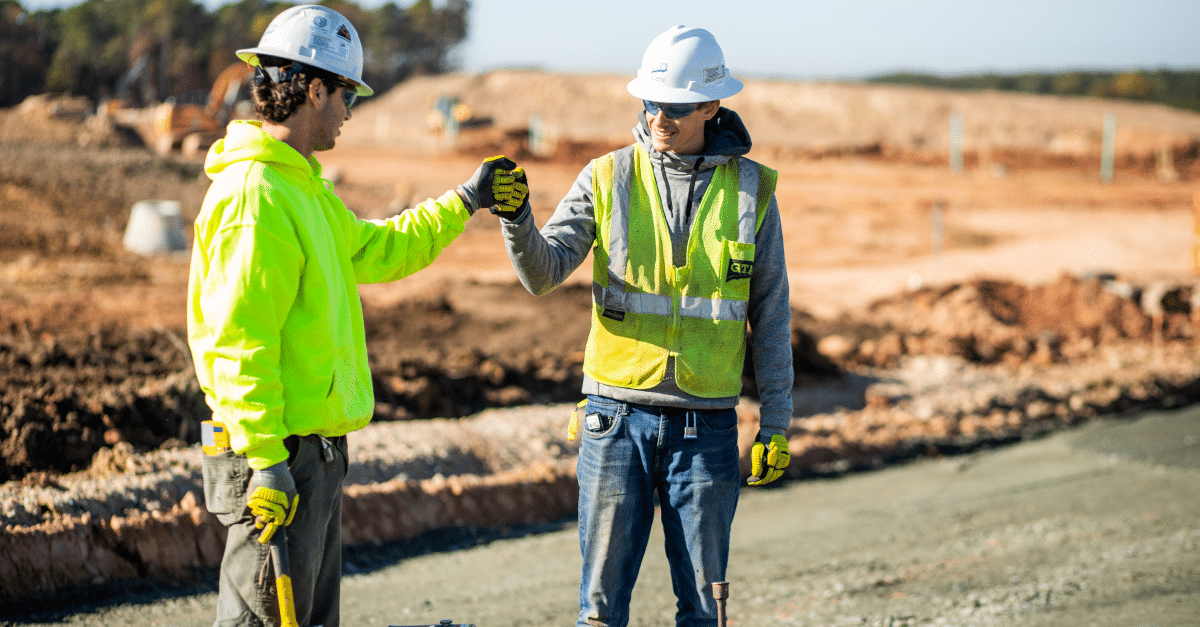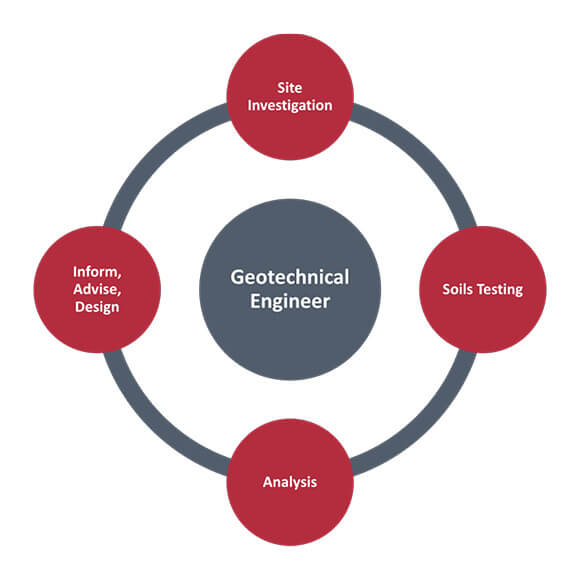Specialized Geotechnical Engineering Solutions Fundamentals Explained
Table of ContentsOur Specialized Geotechnical Engineering Solutions StatementsThe Specialized Geotechnical Engineering Solutions DiariesNot known Facts About Specialized Geotechnical Engineering SolutionsThe smart Trick of Specialized Geotechnical Engineering Solutions That Nobody is Talking About
They carry out website investigations, gather samples, perform laboratory examinations, and assess information to assess the viability of the ground for building and construction jobs. Based on their searchings for, geotechnical designers offer referrals for foundation layout, slope security, preserving structures, and mitigation of geotechnical hazards. They team up with other experts, such as architects, structural engineers, and construction teams, to guarantee that geotechnical factors to consider are incorporated right into the overall job design and implementation.
Foundation Layout: Geotechnical designers play an important function in developing foundations that can securely support the desired structure. They assess the dirt conditions and tons requirements to establish the proper structure type, such as superficial foundations (e.g., footings), deep foundations (e.g., stacks), or specialized techniques like dirt renovation. They consider aspects such as negotiation restrictions, bearing capability, and soil-structure communication to develop optimum foundation layouts.
Getting My Specialized Geotechnical Engineering Solutions To Work
Right here are some sorts of geotechnical designers: Foundation Designer: Foundation engineers focus on making and assessing foundations for frameworks - Specialized Geotechnical Engineering Solutions. They analyze the dirt conditions, tons requirements, and site features to identify one of the most appropriate foundation kind and layout, such as shallow foundations, deep structures, or specialized techniques like stack structures
They execute field testing, accumulate examples, and evaluate the collected data to define the dirt buildings, geologic formations, and groundwater conditions at a website. Geotechnical Instrumentation Designer: Geotechnical instrumentation designers concentrate on monitoring and determining the habits of dirt, rock, and frameworks. They mount and maintain instrumentation systems that keep track of aspects such as dirt negotiation, groundwater degrees, incline activities, and structural displacements to assess performance and offer very early warnings of prospective problems.
In the workplace environment, geotechnical engineers utilize specialized software application tools to do computations, produce styles, and examine information. Specialized Geotechnical Engineering Solutions. They prepare records, evaluation job specs, interact with clients and employee, and coordinate project tasks. The workplace setup supplies a favorable atmosphere for research, analysis, and collaboration with various other specialists associated with the job
They often go to project websites to perform website investigations, evaluate geotechnical conditions, and collect information for analysis. These gos to involve taking a trip to various places, in some cases in remote or challenging surfaces. Geotechnical engineers may execute dirt sampling, conduct tests, and display building activities to ensure that the geotechnical elements of the project are being applied properly.
More About Specialized Geotechnical Engineering Solutions
Geotechnical engineers additionally operate in specialized geotechnical labs. In these centers, they conduct experiments, execute tests on soil and rock examples, and analyze the design homes of the products. Geotechnical lab designers function extensively in these atmospheres, taking care of testing devices, running tools, and recording data. They team up with other laboratory personnel to make certain accurate and reputable screening outcomes.
Keeping Walls: Producing wall surfaces that keep back dirt to stop landslides and provide stability on sloped terrains. Embankments and Earthworks: Designing embankments for roads, railways, and dams to ensure they stay steady under stress. The mining sector relies heavily on geotechnical engineering to make sure the security and long life of its procedures.
With this in mind, we have designed our program to prepare students for success. The Geotechnical Engineering program at the College of Delaware supplies possibilities for innovative research and research study in: Dirt and rock auto mechanics Soil-structure interaction Constitutive modeling Computational geomechanics Foundation and planet frameworks engineering Ground enhancement Slope security and landslide stablizing Liquefaction of dirts and that site earthquake engineering Research laboratory characterization of geomaterials and dirt support Environmental geotechnics Given the solid demand for enhancement their website to our nation's infrastructurethe American Culture of Civil Designers provided the U.S.
Geotechnical design is a branch of civil design; nevertheless, it involves making use of clinical techniques and principles to accumulate and translate the physical buildings of the ground. Geotechnical designers are involved in all phases of the style of structures, from principle to building and construction. Their work is essential in the layout and planning procedure as they examine the integrity of soil, clay, silt, sand, and rock, prior to building and construction beginning.
Not known Incorrect Statements About Specialized Geotechnical Engineering Solutions
This is adhered to by a ground investigation based on the findings of the desk study and includes trial pitting and sampling to uncover any type of prospective problems. Geotechnical engineers work within multidisciplinary teams, supported by intermediate and junior engineers as well as by CAD specialists. As a senior geotechnical engineer on a hydro plant task, jobs might consist of taking part in technical evaluations (e.g., peer evaluations), tailings dam inspections, dam safety reviews, and various other researches associated to the style and building of mine waste facilities.
While some professionals are experts exclusively in geotechnics, others may work under titles like design rock hound or ground engineer within similar abilities. As a geotechnical designer, you'll need to: build and keep connections with clients and various other specialists associated with the site, throughout each projectmaintain safety and security requirements on site be conscious of expense implications when you make recommendationsstudy geological maps and airborne photos from a variety of resources and from different time periodsexamine construction intends to see exactly how feasible they are based upon your understanding of the siteinvestigate risks or geological hazards for the sitesearch for ecologically sensitive attributes, such as garbage dump beginning to establish factual and expository ground modelsplan field investigationsdrill and evaluate samples of bedrock, soil, groundwater and added materials supervise other experts on sitesolve technological concerns as they emerge, such as unforeseen frameworks at drill sitesmonitor conditions throughout and after construction to make certain structures are secure in the short and lengthy termadd data gathered on website to your preliminary researchcreate geotechnical estimations, drawings, and 2 or three-dimensional computer system designs analyzing the datamake recommendations concerning the proposed use of the website.
There are great deals of chances to fulfill new individuals, as you'll function with a variety of experts at every website. The job can be stressful as you may be in charge of the security of others while on website. There is also a high level of monetary duty, as the site here recommendations you make can have major expense effects.
